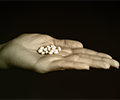Clinical articles
July 2017 Br J Cardiol 2017;24:108–12 doi :http://doi.org/10.5837/bjc.2017.019 Online First
A review of endomyocardial biopsy and current practice in England: out of date or underutilised?
Alex Asher
| Full text
July 2017 Br J Cardiol 2017;24:113–16 doi :http://doi.org/10.5837/bjc.2017.018 Online First
Glitazones (thiazolidinediones)
Emma Johns, Gerry McKay, Miles Fisher
| Full textJuly 2017 Br J Cardiol 2017;24:118–9 doi :http://doi.org/10.5837/bjc.2017.016 Online First
Hypertrophic cardiomyopathy and coronary fistulae
Deidre F Waterhouse, Theodore M Murphy, Charles McCreery, Rory O’Hanlon
| Full textJune 2017 Br J Cardiol 2017;24:62-5 doi :http://doi.org/10.5837/bjc.2017.013
Transient loss of consciousness (TLoC) in primary care: a review of patients presenting with first blackout
Lesley Kavi
| Full textJune 2017 Br J Cardiol 2017;24:75-78 doi :http://doi.org/10.5837/bjc.2017.015
Improving the quality of heart failure discharge summaries
Neil Bodagh, Fahad Farooqi
| Full textApril 2017 Br J Cardiol 2017;24:66-7 doi :http://doi.org/10.5837/bjc.2017.009 Online First
Does CTCA improve the diagnostic yield from conventional coronary angiography? A DGH experience
Colin Reid, Mark Tanner, Hatef Mansoubi, Conrad Murphy
| Full text
April 2017 Br J Cardiol 2017;24:68-71 doi :10.5837/bjc.2017.010 Online First
SGLT2 inhibitors
Emma Johns, Gerry McKay, Miles Fisher
| Full textApril 2017 Br J Cardiol 2017;24:72-4 doi :10.5837/bjc.2017.011 Online First
Recognition and management of posterior myocardial infarction: a retrospective cohort study
Leigh D White, Joshua Wall, Thomas M Melhuish, Ruan Vlok, Astin Lee
| Full textApril 2017 Br J Cardiol 2017;24:79-80 doi :10.5837/bjc.2017.012 Online First
Dedicated side-branch stent: what could go wrong?
Usha Rao, Simon C Eccleshall
| Full text
March 2017 Br J Cardiol 2017;24:25–9 doi :10.5837/bjc.2017.006
Cardiorespiratory fitness, oxygen pulse and heart rate response following the MyAction programme
Tim P Grove, Jennifer L Jones, Susan B Connolly
| Full text
